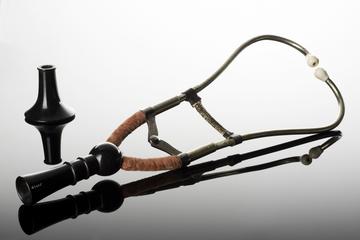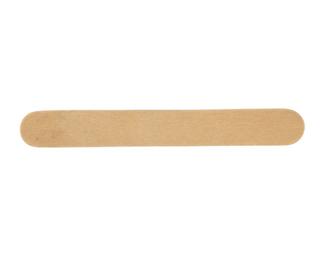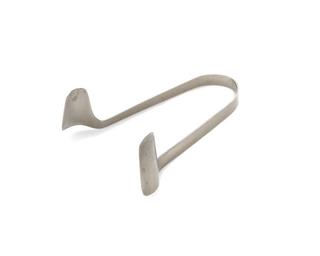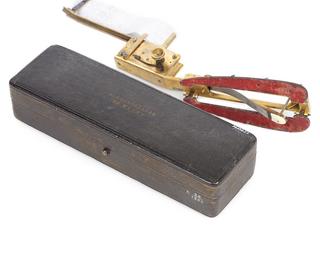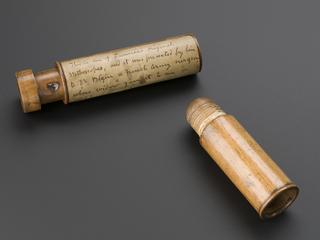

Dudgeon sphygmograph, in case, by Gardner and Son, 32 Forrest Road, Edinburgh, Scotland, 1885-1920. From the collection of Sir James Mackenzie.
Force, rate and variations in the pulse were recorded using a sphygmograph. The first practical version was devised in 1860 by French physician Etienne-Jules Marey (1830-1904). English physician and homeopath Robert Ellis Dudgeon (1820-1904) introduced this new, highly portable sphygmograph in 1881. It was strapped to the wrist. The pulse at the wrist caused a metal strip to move a stylus. This transmitted a record of the pulse onto smoked paper. It created a record of blood pressure and pulse over time.
Dudgeon’s instrument quickly became popular because it was compact and easy to use. This example was owned and used by Scottish physician Sir James Mackenzie (1853-1925). Mackenzie was a leading cardiologist who developed many of his own instruments.
Details
- Category:
- Clinical Diagnosis
- Collection:
- Sir Henry Wellcome's Museum Collection
- Object Number:
- A56269
- Materials:
- complete, leather, velvet, silk, metal (plated), ivory, paper (fibre product) and cotton (textile)
- Measurements:
-
overall (open): 36 mm x 70 mm x 70 mm, .166 kg
overall (closed): 53 mm x 70 mm x 70 mm, .166 kg
- type:
- sphygmograph
- credit:
- Mackenzie
